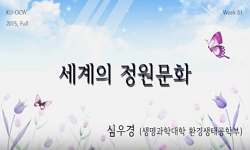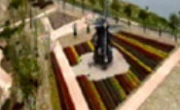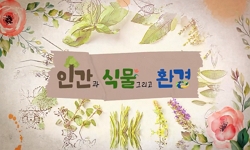한국고전번역원 DB자료에 근거하여 전통주택 관련 ‘집경제영시(集景題詠詩)’를 통해 본 정원의 식물요소와 상징성, 그리고 조경문화를 추적한 연구결과는 다음과 같다. 첫째, ‘집경제영...
http://chineseinput.net/에서 pinyin(병음)방식으로 중국어를 변환할 수 있습니다.
변환된 중국어를 복사하여 사용하시면 됩니다.
- 中文 을 입력하시려면 zhongwen을 입력하시고 space를누르시면됩니다.
- 北京 을 입력하시려면 beijing을 입력하시고 space를 누르시면 됩니다.

집경제영시(集景題詠詩)’를 통해 본전통주택의 조경문화 향유양상 = A Study on the Traditional House Landscape Styles Recorded in ‘Jipkyungjaeyoungsi(集景題詠詩, Series of Poems on Gardens Poetry)’
한글로보기https://www.riss.kr/link?id=A102108371
-
저자
신상섭 (우석대학교)

- 발행기관
- 학술지명
- 권호사항
-
발행연도
2016
-
작성언어
Korean
-
주제어
정원식물 ; 이규보 ; 상징식물 ; 심미적 취향 ; 정원 문화 ; Garden Plant ; Lee GyuBo ; Symbolic Plants ; Aesthetic Taste ; Garden Culture
-
KDC
900
-
등재정보
KCI등재
-
자료형태
학술저널
-
수록면
32-51(20쪽)
-
KCI 피인용횟수
1
- 제공처
- 소장기관
-
0
상세조회 -
0
다운로드
부가정보
국문 초록 (Abstract)
한국고전번역원 DB자료에 근거하여 전통주택 관련 ‘집경제영시(集景題詠詩)’를 통해 본 정원의 식물요소와 상징성, 그리고 조경문화를 추적한 연구결과는 다음과 같다. 첫째, ‘집경제영시’는 고려중기에 유입되어 지속적으로 창작되었는데, 주로 문신의 길을 택한 상류계층에 의해 향유되었다. 총 165책에서 주택정원을 대상으로 25책의 33제영시가 추출되었는데, 최초로 관련 제영시를 남긴 인물은 고려후기의 문신 이규보(1168~1241)로 판단된다. 그는 ‘퇴식재팔영’, ‘가분중육영’, 그리고 ‘가포육영’ 등 경물소재의 확장과 영물시를 팔경시로 대입하여향유문화의 다양화에 기여한 최초의 인물이라 하겠다. 둘째, 제영시 표제는 사랑채 당호가 많이 활용되었으며, 경물은 8영(詠)이 전체33개소 중 19개소(57.5%)였으며, 4영, 6영, 10영, 14영, 15영, 16영, 36영 등의 빈도순으로 제영되었다. 제영에는 소상팔경류의전형성을 벗어나 ①경물명 중심 ②지명과 경관명의 결합 ③경관명 중심으로 차별화 되는 양상을 보인다. 셋째, 소표제는 ①자연 및정원식물 중심의 자연경관소재(22개소, 66.7%)가 주를 이루었고 ②사랑채 건물 및 연못과 정자 등 조경시설 중심의 인문경관소재(3개소) ③자연 속에서 행해지는 인간의 행위요소 중심의 복합 문화경관소재(8개소) 유형으로 구분된다. 이러한 양상은 정원식물의심미적 취향, 실경을 뛰어넘어 관념화된 경물을 향유하며 주목받지 못했던 채소류와 약초류에도 관심을 두는 정감 표출로 이어진다. 넷째, 정원식물은 상록수(4종)에 비해 낙엽수의 개체수(17종) 비중(80.9%)이 월등히 높았다. 이러한 양상은 서유구(1764~1845)의‘임원경제지’에 수록된 상록수 18종(21.2%) : 낙엽수 67종(78.8%)의 비율, 그리고 선행연구[변우혁(1976), 정동오(1977), 이선(2006) 등]와 유사한 결과이다. 다섯째, 정원식물의 출현빈도는 매화(14회), 대나무(14회), 소나무(11회), 연(11회), 국화 10회, 버드나무(5회), 석류(4회), 단풍나무(3회), 오동나무, 배롱나무, 밤나무, 모란, 파초, 갈대, 맨드라미(각각 2회) 등이었다. 즉, 의미론적으로 ①유교적 규범(소나무, 측백, 매화, 국화, 대나무, 연꽃 등) ②안빈낙도의 생활철학(국화, 버드나무) ③은일사상과 태평성대 희구(오동나무, 대나무등) 관련 상징식물의 도입이 상대적으로 높은 출현빈도를 보였다. 여섯째, 안뜰과 바깥뜰, 채원과 약포, 그리고 사랑뜰 화분에 도입된식물류 추적이 가능하였다. 즉, 안뜰에는 심미적 취향을 뛰어넘어 문화경관으로 승화시킨 상징식물의 도입, 채원과 약포에는 채소류, 과실수, 약용식물의 이용후생적 도입 양상이 뚜렷하며, 사랑뜰에 화분을 놓아 완상한 석창포, 석류화, 서상화, 국화, 대나무, 연꽃, 매화등을 도출할 수 있었다. 일곱째, 정자, 연못, 계류, 분경(盆景), 괴석, 후원(後園), 과원(菓園), 약포(藥圃), 화오(花塢), 국리(菊籬), 범주(泛舟), 조어(釣魚), 계음(禊飮), 탁족, 간화(看花), 행림(杏林), 도원(桃源), 무송(撫松), 설중매, 상국(霜菊) 등의 시어(詩語)를 통해조경소재와 관련한 정원 문화의 향유 양상을 추적할 수 있었다.
다국어 초록 (Multilingual Abstract)
This study examines, based on the database of the Institute for the Translation of Korean Classics(ITKC), the garden plants and their symbolism, and the landscape culture recorded in ‘Jipkyungjaeyoungsi(the Series of Poems on Gardens Poetry)’ in r...
This study examines, based on the database of the Institute for the Translation of Korean Classics(ITKC), the garden plants and their symbolism, and the landscape culture recorded in ‘Jipkyungjaeyoungsi(the Series of Poems on Gardens Poetry)’ in relevance to traditional houses. First, Jipkyungjaeyoungsi had been continuously written since mid-Goryeo dynasty, when it was first brought in, until the late Joseon dynasty. It was mainly enjoyed by the upper class who chose the path of civil servants. 33 pieces of Jaeyoungsi(題詠詩) in 25 books out of a total of 165 books are related to residential gardens. The first person who wrote a poem in relation to this is believed to be Lee GyuBo(1168~1241) in the late Goryeo dynasty. He is believed to be the first person to contribute to the expansion of natural materials and the variation of entertainment in landscape culture with such books as ‘Toesikjaepalyoung(退食齋八詠)’, ‘Gabeunjeungyukyoung(家盆中六詠)’and ‘Gapoyukyoung(家圃六詠)’. Second, most of the poems used the names of the guesthouses. Out of the 33 sections, 19(57.5%) used 8 yeong(詠), then it was in the sequence of 4 yeong(詠), 6 yeong, 10 yeong, 14 yeong, 15 yeong, 16 yeong, 36 yeong(詠) and so on. In the poem writing, it appears to break the patterns of Sosangpalkyung(瀟湘八景) type of writings and is differentiated by ① focusing on the independent title of the scenery, ② combining the names of the place and landscape, ③ focusing on the name of the landscape. Third, the subtitles were derived from ① mostly natural landscape focused on nature and garden plants(22 sections, 66.7%), ② cultural landscape focused on landscape facilities such as guesthouses, ponds and pavilions(3 sections), ③ complex cultural scenery focused on the activities of people in nature(8 sections). Residents enjoy not only their aesthetic preferences and actual view, but the ideation of the scenery. Especially, they display attachment to and preference for vegetables and herbs, which had been neglected. Fourth, the percentage of deciduous tree population(17 species) rated higher(80.9%) compared to the evergreens(4 species). These aspects are similar results with the listed rate in ‘Imwonkyungjaeji(林園經濟志)’ by Seo YuGu [evergreen 18 species(21.2%) and deciduous trees 67 species(78.8%)] and precedent researches [Byun WooHyuk(1976), Jung DongOh(1977), Lee Sun(2006)]. Fifth, the frequency of the occurrence of garden plants were plum blossoms(14 times), bamboos(14 times), pine trees(11 times), lotus(11 times), chrysanthemum(10times), willows(5 times), pomegranates(4 times), maple trees(14 times), royal foxglove trees, common crapemyrtle, chestnut trees, peony, plantains, reeds and a cockscombs(2 times). Thus, the frequency were higher with symbolic plants in relations to ① Confucian norms(pine trees, oriental arbor vitae, plum blossoms, chrysanthemums, bamboos and lotus), ② living philosophy of sustain-ability(chrysanthemum, willow), ③ the ideology of seclusion and seeking peace of mind(royal foxglove ree, bamboo). Sixth, it was possible to trace plants in the courtyard and outer garden, vegetable and herb garden. Many symbolic plants were introduced in the courtyard, and it became cultural landscape beyond aesthetic taste. In the vegetable and herb garden, vegetables, fruits and medicinal plants are apparently introduced for epigenetic use. The plants that were displayed to be observed and enjoyed were the sweet flag, pomegranate, daphne odora, chrysanthemum, bamboo, lotus and plum blossom. Seventh, it was possible to understand garden culture related to landscaping materials through poetic words such as pavilions, ponds, stream, flower pot, oddly shaped stones, backyard, orchard, herb garden, flower bed, chrysanthemum fence, boating, fishing, passing the glass around, feet bathing, flower blossom, forest of apricot trees, peach blossoms, stroking the pine tree, plum flower blossoming through the snow and frosted chrysanthemum
참고문헌 (Reference)
1 邊雨赫, "李朝時代 庭園의 樹木과 配置에 關한 硏究" 서울대학교 환경대학원 1976
2 신상섭, "홍만선의‘산림경제(山林經濟)’에서 본 조경식물 재배(種樹法)와 가꾸기(養花法)" 국립문화재연구소 44 (44): 18-43, 2011
3 안장리, "한국의 팔경문화" 집문당 2002
4 허균, "한국의 정원, 선비가 거닐던 세계" 다른세상 2002
5 정동오, "한국의 정원" 민음사 1986
6 조동일, "한국문학사상사시론" 지식산업사 1982
7 "한국고전번역원"
8 정동오, "한국 조경식물의 사적고찰" 2 : 1977
9 김갑기, "한국 제영시 연구(Ⅰ)" 한국문학연구소 (12) : 243-268, 1989
10 염정섭, "풍석 서유구와 임원경제지" 소와당 2011
1 邊雨赫, "李朝時代 庭園의 樹木과 配置에 關한 硏究" 서울대학교 환경대학원 1976
2 신상섭, "홍만선의‘산림경제(山林經濟)’에서 본 조경식물 재배(種樹法)와 가꾸기(養花法)" 국립문화재연구소 44 (44): 18-43, 2011
3 안장리, "한국의 팔경문화" 집문당 2002
4 허균, "한국의 정원, 선비가 거닐던 세계" 다른세상 2002
5 정동오, "한국의 정원" 민음사 1986
6 조동일, "한국문학사상사시론" 지식산업사 1982
7 "한국고전번역원"
8 정동오, "한국 조경식물의 사적고찰" 2 : 1977
9 김갑기, "한국 제영시 연구(Ⅰ)" 한국문학연구소 (12) : 243-268, 1989
10 염정섭, "풍석 서유구와 임원경제지" 소와당 2011
11 姜熙悅, "제영시 「면앙정 30영」 연구" 水原大學校 敎育大學院 1995
12 서유구, "임원경제지"
13 이선, "우리와 함께 살아온 나무와 꽃 : 韓國 傳統 造景 植栽" 수류산방.중심 2006
14 정병현, "우리 선비들은 자연에서 무엇을 깨달았을까" 사군자 2004
15 김성룡, "여말선초의 문학사상" 한길사 1995
16 강희안, "양화소록" 을유문화사 2000
17 황수정, "매천 황현의 <園植十五咏> 형상화 방식" 한국시가문화학회 (30) : 329-360, 2012
18 수원박물관, "동아시아의 팔경문화" 수원박물관대학 2014
19 이황, "도산잡영"
20 농촌진흥청, "국역 증보산림경제" 민후아트 2003
21 박순철, "국역 임원경제지" 소와당 2010
22 박세인, "睡隱 姜沆의 連作形 題詠詩 고찰" 한국시가문화학회 (25) : 137-167, 2010
23 신상섭, "「芝峯類說」로 본 李睟光의 조경식물 인식 및 가치관" 한국전통조경학회 27 (27): 1-10, 2009
24 신상섭, "‘임원경제지’를 통해 본 식물의 이용경향과 종예법(種藝法)" 국립문화재연구소 45 (45): 140-157, 2012
25 "https://ko.wikipedia.org/wiki/"
26 "http://m.blog.daum.net/dasan518/6567152"
27 "http://db.itkc.or.kr/itkcdb/text/nodeViewIframe.jsp?bizName=MK&seojiId"
28 "http://blog.naver.com/osj1952?Redirect=Log&logNo=100103977368"
동일학술지(권/호) 다른 논문
-
- 국립문화재연구원
- 이상균
- 2016
- KCI등재
-
- 국립문화재연구원
- 장경희
- 2016
- KCI등재
-
부석사 무량수전 측면 지붕부 결구의구성방식에 관한 재고(再考)
- 국립문화재연구원
- 차주환
- 2016
- KCI등재
-
- 국립문화재연구원
- 쑨화(孙华)
- 2016
- KCI등재
분석정보
인용정보 인용지수 설명보기
학술지 이력
| 연월일 | 이력구분 | 이력상세 | 등재구분 |
|---|---|---|---|
| 2027 | 평가예정 | 재인증평가 신청대상 (재인증) | |
| 2021-01-01 | 평가 | 등재학술지 유지 (재인증) |  |
| 2018-01-01 | 평가 | 등재학술지 유지 (등재유지) |  |
| 2015-01-01 | 평가 | 등재학술지 유지 (등재유지) |  |
| 2011-01-01 | 평가 | 등재학술지 선정 (등재후보2차) |  |
| 2010-01-01 | 평가 | 등재후보 1차 PASS (등재후보1차) |  |
| 2008-01-01 | 평가 | 등재후보학술지 선정 (신규평가) |  |
학술지 인용정보
| 기준연도 | WOS-KCI 통합IF(2년) | KCIF(2년) | KCIF(3년) |
|---|---|---|---|
| 2016 | 0.39 | 0.39 | 0.32 |
| KCIF(4년) | KCIF(5년) | 중심성지수(3년) | 즉시성지수 |
| 0.3 | 0.32 | 0.57 | 0.08 |




 RISS
RISS





